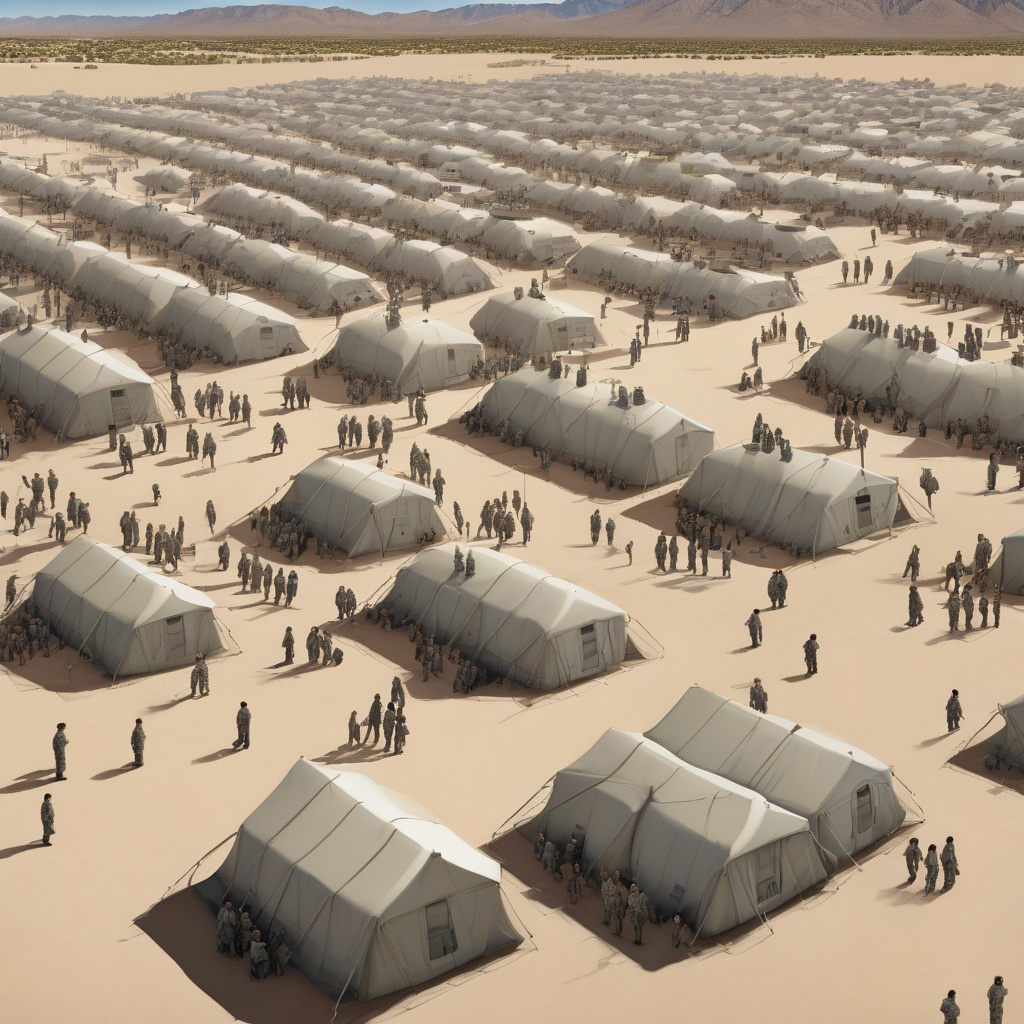WWII Internment Site at Fort Bliss Becomes Largest US Migrant Detention Camp
Fort Bliss, a US Army base located on the edge of the Chihuahuan Desert in Texas, holds a unique historical significance as a former internment site during World War II. Originally used to detain Japanese Americans, this site has now been repurposed as the largest migrant detention camp in the United States.
The decision to convert the historical internment site into a detention center for migrants has sparked controversy and raised ethical questions about the treatment of individuals seeking refuge in the country. Critics argue that repurposing a site with such a dark past for similar purposes perpetuates a cycle of injustice and goes against the principles of freedom and democracy that the United States stands for.
Despite the backlash, authorities defend the decision by citing the practicality of utilizing an existing facility to address the increasing number of migrants arriving at the US-Mexico border. The Fort Bliss migrant detention camp has the capacity to house thousands of individuals and provides basic amenities such as shelter, food, and medical care while their immigration cases are processed.
The parallels between the internment of Japanese Americans during WWII and the detention of migrants at Fort Bliss are hard to ignore. Both involve the confinement of a group of people based on their ethnicity or nationality, raising concerns about human rights violations and due process. The lessons from history remind us of the dangers of allowing fear and prejudice to dictate our actions towards those who are most in need of compassion and understanding.
As the debate over immigration policies and border security continues to divide the nation, it is essential to approach the issue with empathy and respect for the dignity of every individual. While the practicality of using existing facilities like Fort Bliss for detention purposes may seem logical from a logistical standpoint, we must not lose sight of the moral implications of such decisions.
Efforts to address the root causes of migration, such as poverty, violence, and political instability in migrants’ countries of origin, are crucial in preventing the need for detention centers like Fort Bliss in the first place. By investing in diplomacy, foreign aid, and humanitarian assistance, we can work towards creating a more just and compassionate system that upholds the values of liberty and equality for all.
In conclusion, the transformation of the WWII internment site at Fort Bliss into the largest US migrant detention camp serves as a stark reminder of the complex challenges faced in addressing immigration issues. By acknowledging the historical context of such sites and striving to uphold human rights and dignity, we can move towards a more inclusive and humane approach to immigration that reflects the values we hold dear as a nation.
Fort Bliss, WWII, internment, migrant detention camp, human rights










